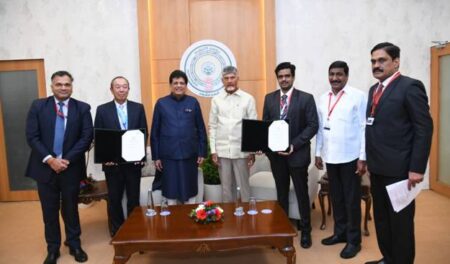TVS Supply Chain overhauls overseas ops, targets 4% PBT margin by FY27 via ‘Project One’ savings (₹120 crore) & ISCS focus

After a significant reorganisation of its international operations, TVS Supply Chain Solutions (SCS), whose wafer-thin margins and poor post-IPO (initial public offering) performance have impacted investor enthusiasm since its 2023 debut, is attempting to reset expectations.
The company moved back-end work to India and centralised operations in expensive markets, including the US and Europe, as part of “Project One.” Managing director Ravi Viswanathan stated in an interview on 19th November, 2025, that these initiatives could increase the company’s profit before tax margin to 4% by FY27 and save roughly ₹120 crore yearly.
In the first half of the fiscal year 2026, the margin was less than 1%.
According to him, the company is also adding more staff for its business development teams and investing in growing its high-margin integrated supply chain services (ISCS) business in the US and Europe.
However, experts noted that the Chennai-based company’s low margins, which might be quickly disrupted by global volatilities like tariffs and conflicts, will make it difficult for it to fulfil its guidance.
According to experts at Ashika Institutional Equity Research, “the company continues to make steady progress towards its 4QFY27 profitability goal, but several operational and macro-related challenges remain, necessitating a more measured stance.”
They said that their predictions were conservative due to the company’s persistent underperformance and the continuous macroeconomic headwinds. They reduced their price prediction from ₹175 to ₹150, although they kept their buy recommendation on the stock.
On November 19th, the company’s shares closed at ₹116.8 on the BSE, a decrease of more than 40% from their August 2023 offering price of ₹197.05.
Its market value is approximately ₹5,150 crore.
The company is expanding its ISCS division, which posted an earnings before interest, taxes, depreciation, and amortisation (Ebitda) margin of 8.5% in the six months ended September, in an effort to strengthen its margins.
This company manages the whole logistics needs of its clients, including distribution, warehousing, and procurement. Compared to the global forwarding services business division, which just handles freight forwarding, this helps it generate higher margins.
In the first half of this fiscal year, the latter business segment’s Ebitda margin was just 2.1%, resulting in a combined Ebitda margin of 6.7%.
SOURCE – MINT











